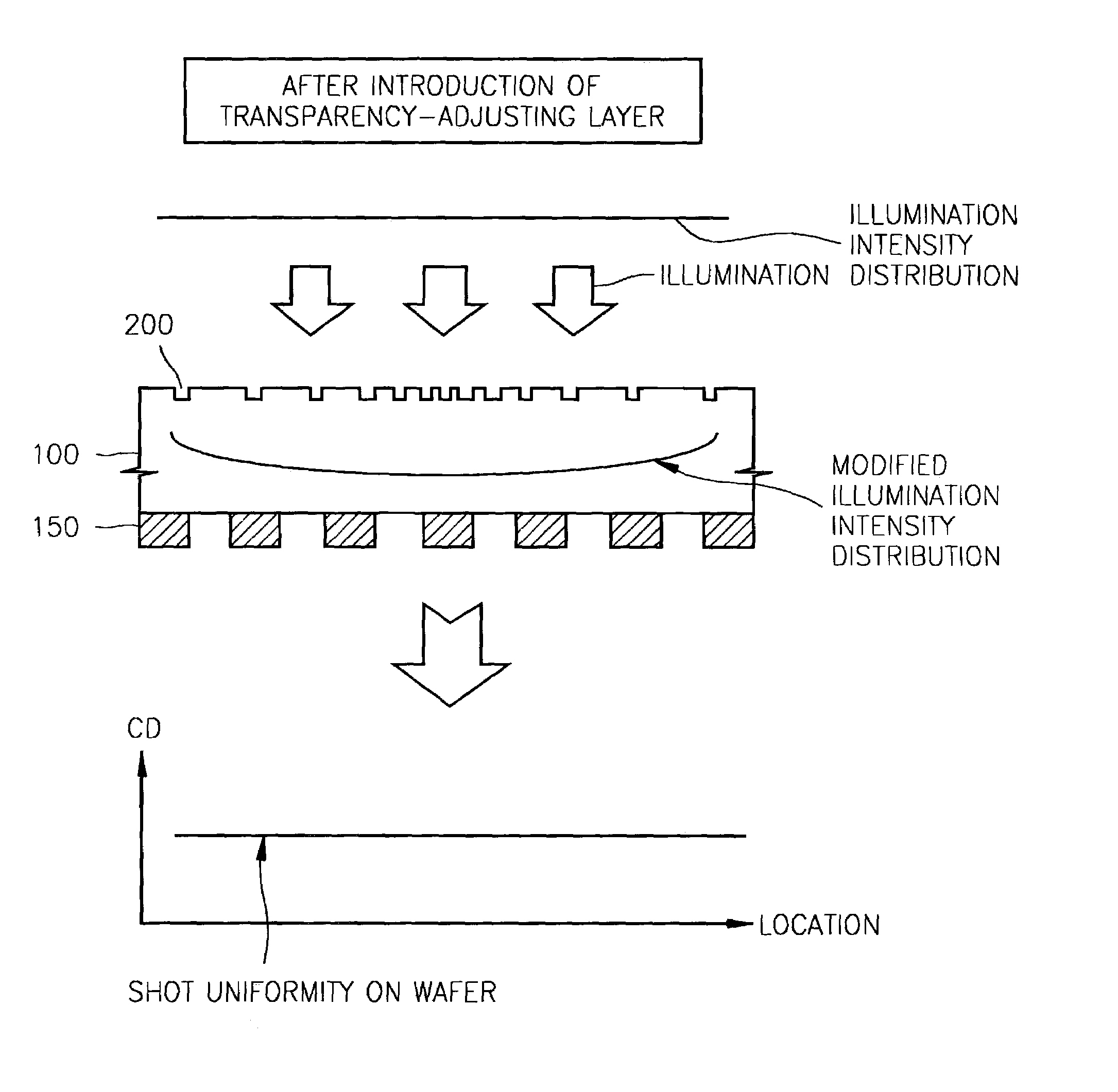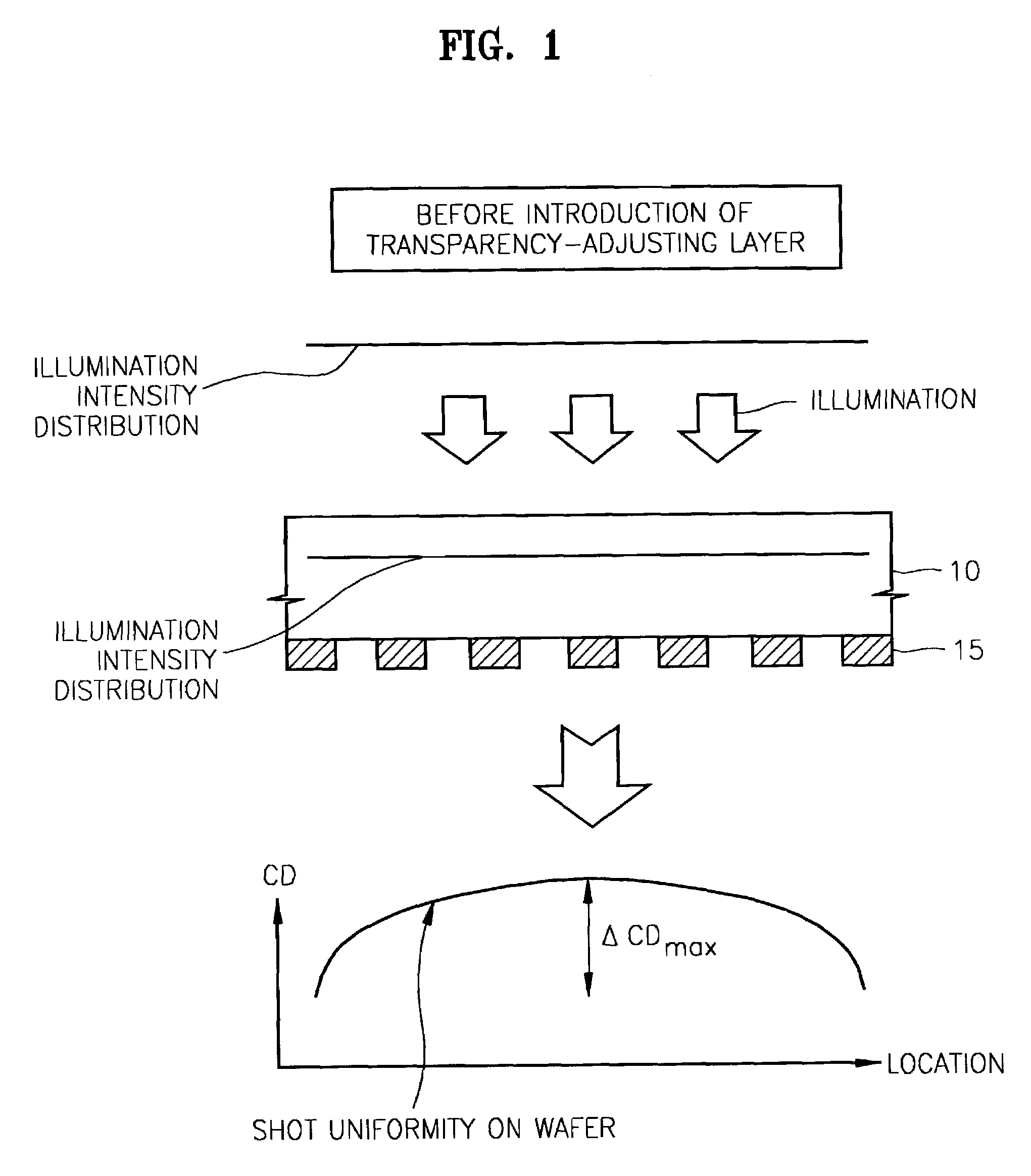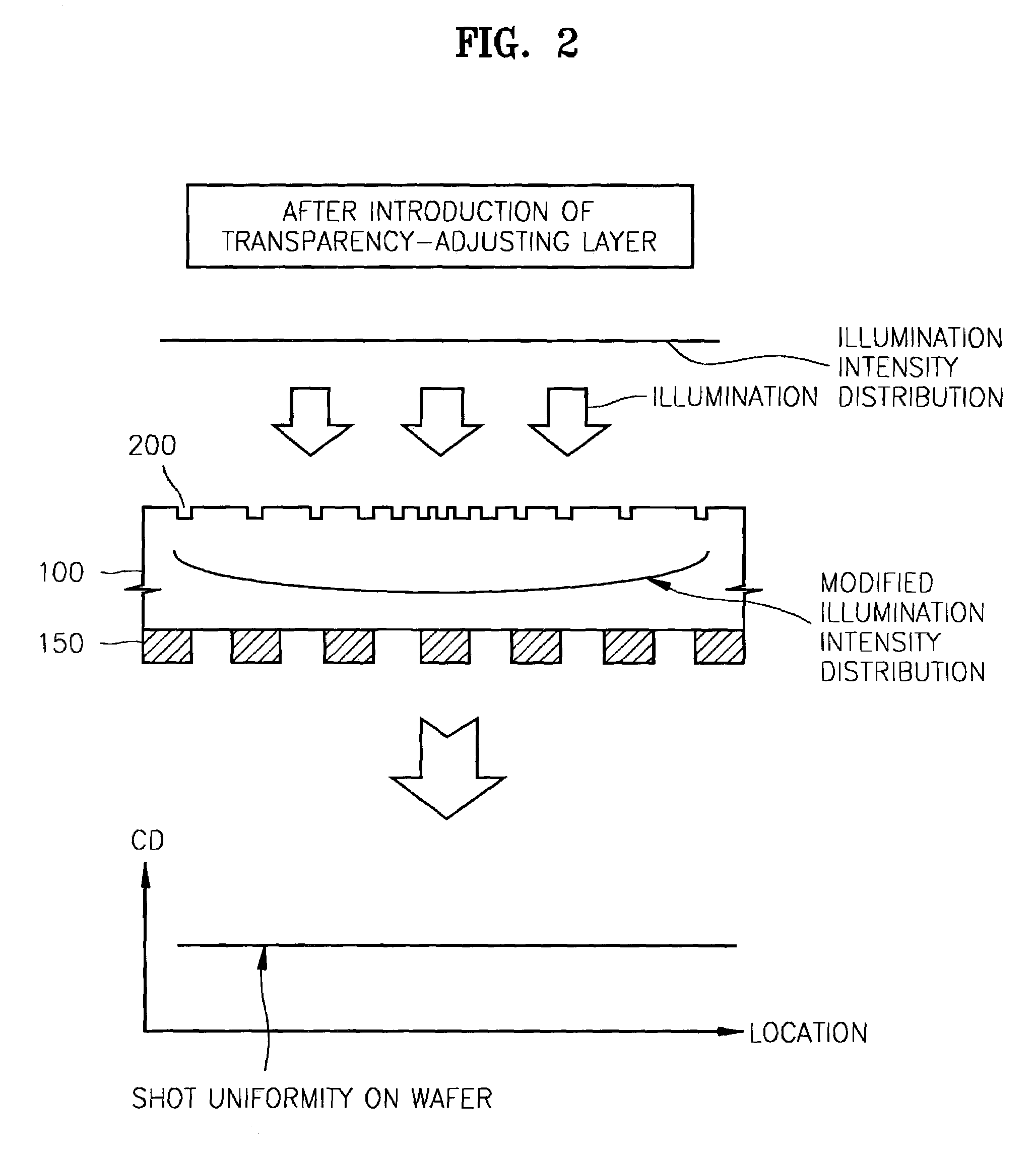Photomask having a transparency-adjusting layer, method of manufacturing the photomask, and exposure method using the photomask
a technology of transparency adjustment and exposure method, which is applied in the field of exposure apparatus, can solve the problems of reducing the design rules for manufacturing these devices, serious obstacles to manufacturing semiconductor devices with high integrated circuit patterns, and limit the resolution of the exposure process of photolithography, so as to improve the uniformity of the critical dimensions of the pattern formed on the wafer by the second exposure process
- Summary
- Abstract
- Description
- Claims
- Application Information
AI Technical Summary
Benefits of technology
Problems solved by technology
Method used
Image
Examples
first embodiment
[0066]FIG. 7 illustrates the results of measuring critical dimensions of a pattern formed on a wafer through a typical exposure process before the process is corrected according to the present invention. In particular, FIG. 7 shows the magnitudes and distribution of critical dimensions of a pattern formed on a wafer through an exposure process using a conventional photomask having a design rule of 0.146 μm. The results of the measurements are shown in 5-nm wide groups ranging from 125–130 nm to 165–170 nm. The average of the critical dimensions is 148.1 nm, 3σ of the distribution of the critical dimensions is 28.8 nm, and the range of the distribution of the critical dimensions is 43.1 nm.
[0067]The critical dimensions become greater closer to the bottom of the distribution shown in FIG. 7. In other words, FIG. 7 shows that the measured critical dimensions become greater in a direction from the top to the bottom of the distribution. FIG. 8 illustrates representative doses of exposure...
second embodiment
[0093]In the second embodiment of the present invention shown in FIG. 15, the transparency-adjusting pattern layer is in the form of a patterned layer of material formed on a rear side of a photomask substrate.
[0094]More specifically, a shielding layer is formed on a rear side of a photomask substrate 100. The photomask substrate 100 is a transparent substrate, for example, a quartz substrate, bearing a main pattern 150 that is to be transferred to a wafer. The shielding layer may be formed of a material, such as chromium (Cr), that can either reflect light or can absorb the light. The shielding layer is patterned thus forming transparency-adjusting pattern features 250.
[0095]The transparency-adjusting pattern features 250 reduce the intensity of light incident on the main patterns 150 by reflecting or absorbing the light incident on the rear side of the photomask. Accordingly, the transparency-adjusting pattern features 250 produce an exposure dose distribution across the wafer, si...
third embodiment
[0097]The first and second embodiments of the present invention entail photomasks wherein transparency-adjusting pattern features are provided at the rear side of the substrate of the photomask. In the third embodiment of the present invention, an auxiliary mask substrate 275 having transparency-adjusting pattern features 270 is attached to the rear side of a photomask substrate, as shown in FIG. 16.
[0098]The photomask substrate 100 is a transparent substrate, for example, a crystalline substrate. As was described above, the main pattern 150 to be transferred to a wafer is formed on the front side of the photomask substrate 100. The auxiliary mask substrate 275 may be bonded to the photomask substrate 100, at the rear side of the photomask substrate 100, by bonding material 279.
[0099]The transparency-adjusting pattern features 270 are recesses formed in the rear side of the auxiliary mask substrate 275. In this case, light passing through the recesses is out of phase with respect to...
PUM
 Login to View More
Login to View More Abstract
Description
Claims
Application Information
 Login to View More
Login to View More - R&D
- Intellectual Property
- Life Sciences
- Materials
- Tech Scout
- Unparalleled Data Quality
- Higher Quality Content
- 60% Fewer Hallucinations
Browse by: Latest US Patents, China's latest patents, Technical Efficacy Thesaurus, Application Domain, Technology Topic, Popular Technical Reports.
© 2025 PatSnap. All rights reserved.Legal|Privacy policy|Modern Slavery Act Transparency Statement|Sitemap|About US| Contact US: help@patsnap.com



